How to Fix a Non-Responsive Finder on Your Mac
The Finder is the default GUI shell and file manager present in all Mac systems. It’s integral for launching applications and managing files and disks.

However, users sometimes encounter issues where Finder stops responding. It may get stuck on the screen, or its window may display as ‘not responding.’ This is a common problem experienced by users worldwide.
In this article, we will explore the potential causes of this issue and outline possible solutions to resolve it.
After thorough user report reviews and investigations, we’ve identified several reasons why this issue may occur on your Mac:
- Bad configuration of Finder: Finder’s internal configuration may become corrupt, leading to operational issues.
- Indexing: While indexing aids in file retrieval, it can sometimes slow down the Finder.
- Low storage: Some MacBook models offer lower storage options, which might lead to a slower Finder as space reduces.
- Corrupt preferences: If Finder’s preference files are corrupt or incomplete, performance may be affected.
- User profile errors: A user profile in an error state can cause various problems, including Finder malfunctions. Logging in again can sometimes resolve these issues.
- Third-party plugins: While Apple discourages the installation of unverified plugins, users may overlook this advice, leading to potential conflicts with Finder.
Before we start with the solutions, ensure that you are logged in as an administrator and have saved all your work, as we will be restarting the system frequently.
Solution 1: Restarting the Finder
The first troubleshooting step is to restart Finder. At times, due to a bad configuration or temporary data, Finder may exhibit unusual behavior or enter an error state like the ‘Not responding’ issue at hand.
First, try Force Quitting Finder from its drop-down menu:
- Open Finder. It should be the active application on your Mac.
- Hold the Shift key, click on the Apple icon, and select Force Quit Finder.
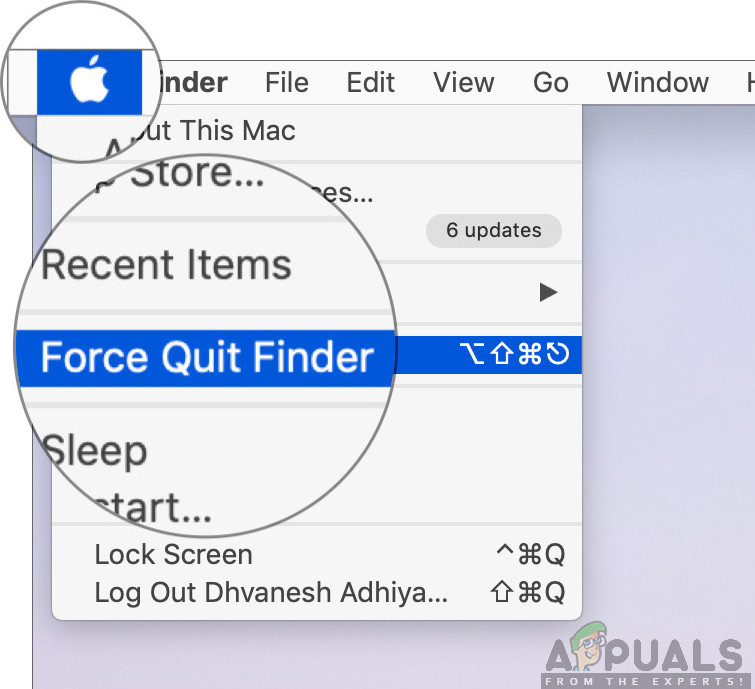
Force Quitting Mac Finder - If Finder doesn’t restart automatically, manually open it to check its functionality.
If the above method fails, try using the Force Quit Applications window:
- Press CMD + Option + Esc on your keyboard.
- In the list of running applications, find Finder and click Relaunch.
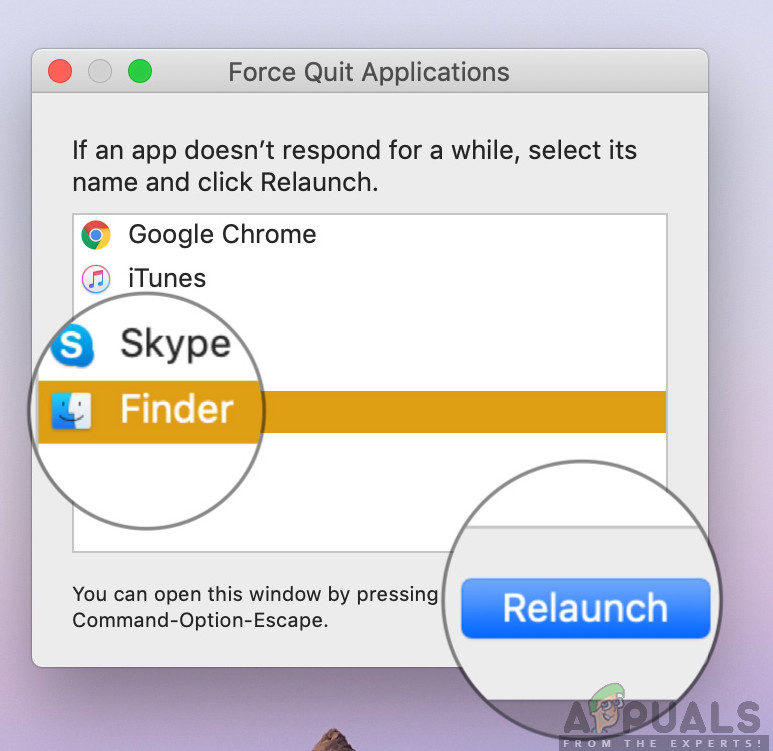
Relaunching the Finder – macOS - Check if Finder is now functioning correctly.
Alternatively, you can relaunch Finder from the Dock:
- While holding the Option key, right-click on Finder in the Dock.
- Select Relaunch. Finder should automatically relaunch and hopefully operate normally.
Solution 2: Ending the Process from Activity Monitor
macOS includes a built-in utility called Activity Monitor that gives insight into what processes are running on your Mac. If Finder is not responding, it may be in an error state or experiencing configuration issues. Using Activity Monitor can help identify and resolve the issue.
- Open the Finder and go to the following path:
/Applications/Utilities/
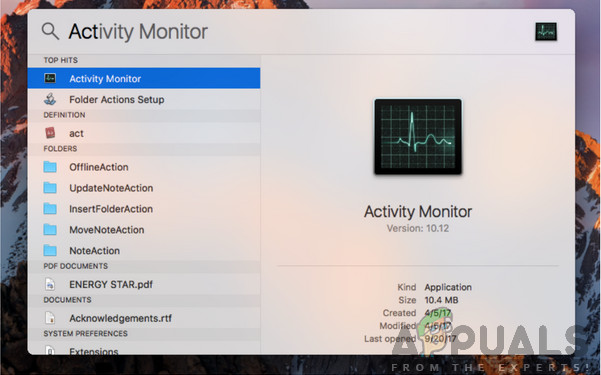
Alternatively, use Spotlight by pressing Command + Spacebar and search for “Activity Monitor.”
- Locate Activity Monitor, open it, and end the task or restart the process.

Ending Activity Monitor Task - Relaunch Finder afterward and verify if the issue persists.
Solution 3: Deleting the Preferences Files
Corrupt preferences can cause Finder to malfunction. These preference files store Finder’s settings and actions. In the following solution, we will delete the preference files using Terminal in macOS. Note that this action will reset Finder to its default settings, and any custom preferences will be lost.
Important: Save all work before proceeding, as a restart will be required.
- Open the Terminal application from Applications > Utilities, or by performing a Spotlight search for Terminal.
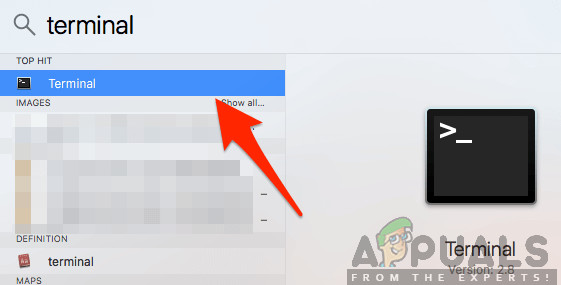
Launching Terminal – macOS - Execute the following command in Terminal to delete Finder’s preferences, ensuring you have administrative privileges:
sudo rm ~/Library/Preferences/com.apple.finder.plist

Deleting Finder Preferences
- Restart your computer and try opening Finder again to see if the issue is resolved.
Solution 4: Power Cycling Your Mac
Power cycling can resolve issues caused by corrupt or incomplete temporary configurations. Ensure all data is saved prior to carrying out this action.
- Log out of your profile and shut down your Mac.
- Disconnect the power cable and all peripherals, and wait for 4-5 minutes.
- Press and hold the power button to turn on the computer, log in, and attempt to launch Finder to check if the problem has been resolved.
Solution 5: Clearing Storage
A low storage situation may cause Finder to behave erratically. Although some MacBook models offer high-speed SSDs, their storage capacity might be lower than that of other computers. Ensuring you have adequate free space on your operating system is essential.

Remove unnecessary files, such as large media files, and empty the Recycle Bin. If needed, use disk cleaning utilities to free up more space. After securing at least 5-6 GB of free storage, restart your computer and try using Finder again.
Solution 6: Checking Third-Party Plugins
Incompatibilities with third-party plugins can lead to Finder issues. If you suspect a plugin conflict, identify and uninstall the problematic application.
- Go to the Applications folder, switch the view to List, and review all installed applications.
- Select and uninstall any application you suspect may be causing the issue.
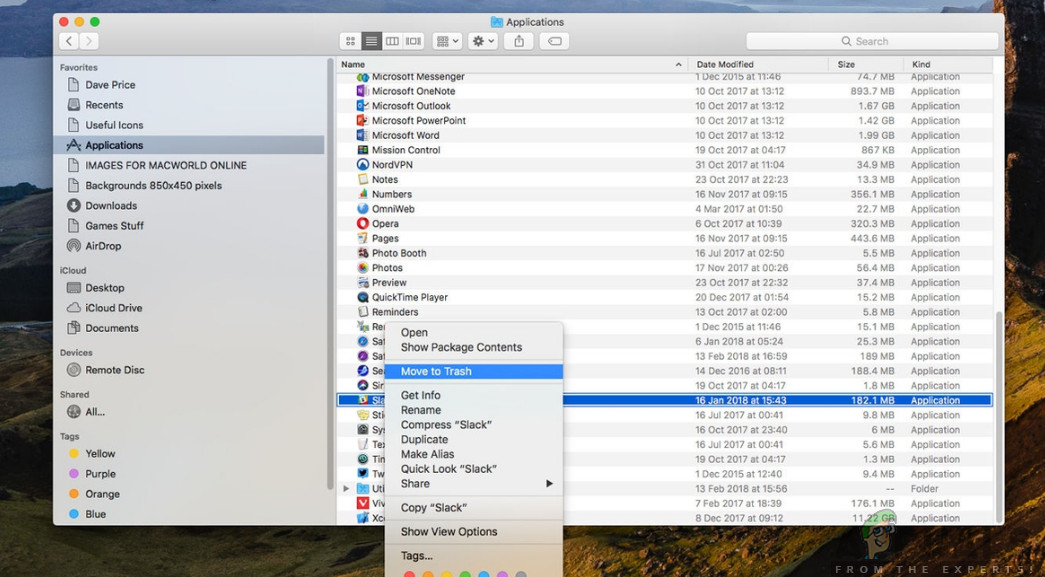
Uninstalling Mac Application - Afterwards, restart your Mac and open Finder to test if the problem has been fixed.
Solution 7: Resetting Mac to Factory Settings
If the problem persists, restoring your Mac to factory settings could be the final solution. This process requires backing up your data as it will erase your storage. Only proceed after ensuring your files and application configurations are secured.
- To enter Recovery Mode, restart your Mac and hold the command + R keys.
- Select Disk Utility, choose your startup disk, and click Erase. Set the format to Mac OS Extended (Journaled) as prompted.

Resetting Mac to Factory Settings - Exit Disk Utility and select Reinstall macOS from the recovery menu to start the reinstallation process. By the end of the process, Finder should be working correctly.





